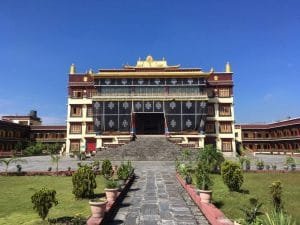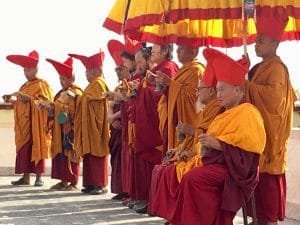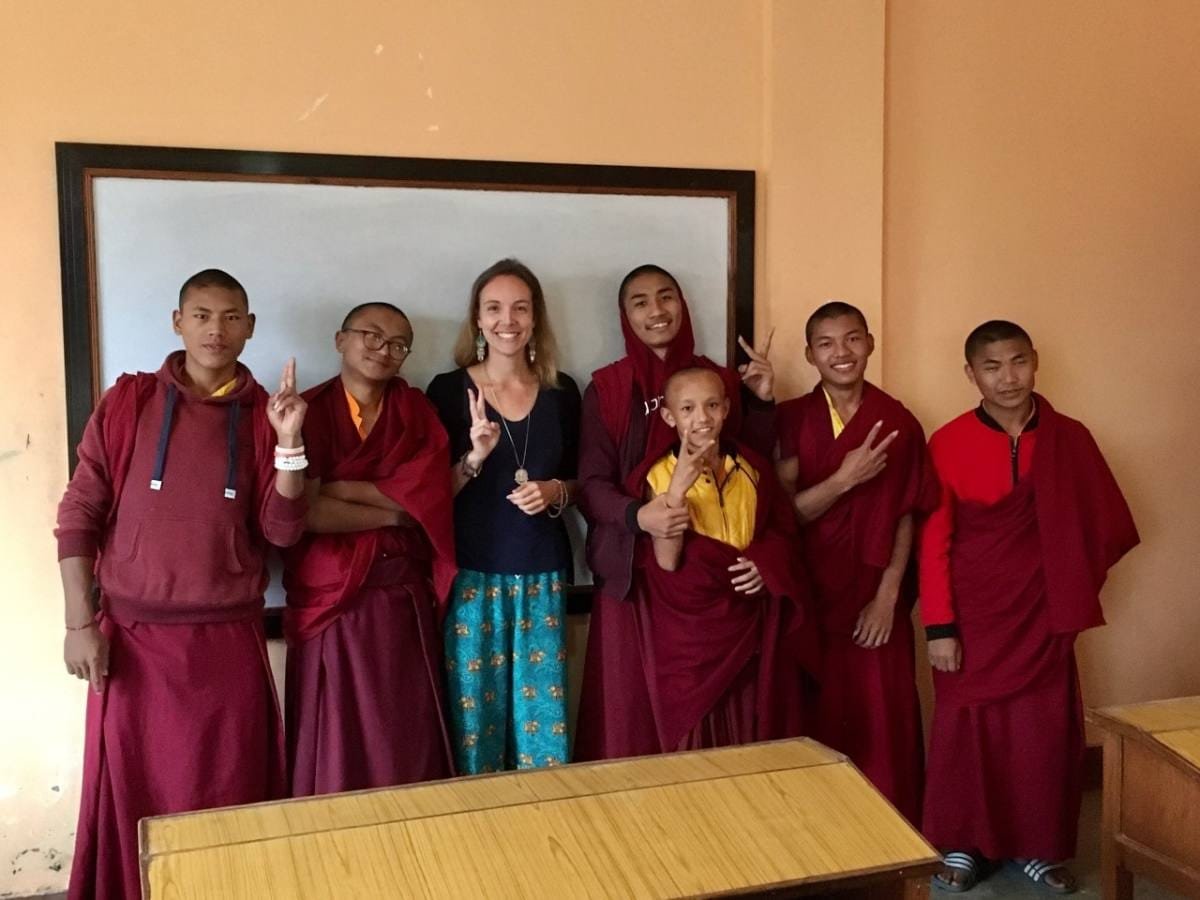 For me it was a once-in-a-lifetime experience and I can only recommend it. I’ve come to experience the Nepali people as very friendly and helpful. The food is yummy, especially momos (dumplings filled with vegetables or meat) and the typical dal bhat (lentils and rice). If you don’t like your food too spicy, make sure you check with your waiter before ordering certain dishes. Bargaining is the norm when you buy souvenirs or take a taxi or rickshaw so if this is something new to you, give it a try and don’t settle too easily.
For me it was a once-in-a-lifetime experience and I can only recommend it. I’ve come to experience the Nepali people as very friendly and helpful. The food is yummy, especially momos (dumplings filled with vegetables or meat) and the typical dal bhat (lentils and rice). If you don’t like your food too spicy, make sure you check with your waiter before ordering certain dishes. Bargaining is the norm when you buy souvenirs or take a taxi or rickshaw so if this is something new to you, give it a try and don’t settle too easily.
I arrived in Kathmandu prior to my volunteering work and it was no problem for VIN to pick me up from the hotel I was staying at instead of the airport. During the induction days, I was accommodated at VIN hostel and shared the room with the other volunteers. We received an overview of VIN’s various projects, cultural tips, useful information on health and safety and some basic Nepali language training. We were also supplied with various contacts for any questions we may have. WhatsApp and email are easy ways to communicate with VIN staff and they reply swiftly. If you would like to buy a local SIM card, Akkal can help you out with that. He is also VIN’s driver and he dropped me off at the monastery where I taught English. During my time there, VIN staff would stop by from time to time to check on me and make sure everything was okay.
 My volunteering work was Teaching English at Drikung Kagyu Rinchen Ling Monastery in Nayapati for 10 weeks. It was truly an unforgettable experience and I wish I could have stayed longer. The monks are a cheerful crowd, always happy and friendly. Their laughs are addictive. A normal day starts at 5am when they ring the morning bell, then at 6 o’clock they have morning prayers. I was always welcome to join, also during the many pujas (prayers and offerings) that occur – sometimes – at short notice. The sessions are usually around 1.5 hours long, then there is a short break before they continue. Definitely worthwhile attending to learn about an essential part of the monks’ lives. It was also special for me to discover the Tibetan tea (slightly salty) and tsampa, the typical Tibetan breakfast. It is barley flour that you mix with Tibetan tea and you can add sugar or dried cheese to enhance the taste. Interestingly, not many of the monks at Rinchenling liked tsampa so on those days the dining hall was almost empty at breakfast time. For lunch we would have delicious dal bhat and vegetables and in the evenings soup or noodles and fresh bread. At 3pm in the afternoon they served sweet milk tea.
My volunteering work was Teaching English at Drikung Kagyu Rinchen Ling Monastery in Nayapati for 10 weeks. It was truly an unforgettable experience and I wish I could have stayed longer. The monks are a cheerful crowd, always happy and friendly. Their laughs are addictive. A normal day starts at 5am when they ring the morning bell, then at 6 o’clock they have morning prayers. I was always welcome to join, also during the many pujas (prayers and offerings) that occur – sometimes – at short notice. The sessions are usually around 1.5 hours long, then there is a short break before they continue. Definitely worthwhile attending to learn about an essential part of the monks’ lives. It was also special for me to discover the Tibetan tea (slightly salty) and tsampa, the typical Tibetan breakfast. It is barley flour that you mix with Tibetan tea and you can add sugar or dried cheese to enhance the taste. Interestingly, not many of the monks at Rinchenling liked tsampa so on those days the dining hall was almost empty at breakfast time. For lunch we would have delicious dal bhat and vegetables and in the evenings soup or noodles and fresh bread. At 3pm in the afternoon they served sweet milk tea.
I taught 4 different classes. I enjoyed it very much and was happy to see how the monks improved their English over time. The biggest challenge is that their level of English can vary quite a bit. Some attended school before coming to the monastery and had previous knowledge while others struggled to keep up in class. The age range was between 14 and 19. They are Buddhist monks of course, but they are teenagers like anywhere else in the world. They enjoy games, playing football, and interacting on social media. If you want to take photos ask them first but they will most likely always say yes. You are also allowed to take photos inside the great hall during puja.
 Coming from Switzerland, I had to get used to some things at first but after the first week I already felt at home. The monks also took good care of me whenever I needed anything. They organized a taxi for me when I needed to go somewhere “unreachable” by local bus, they provided me with a chair for my room (the standard rooms don’t have chairs) and they gave me a heater for my room when the weather became colder. Whenever they went outside the monastery for an external event I was asked if I’d like to join and that was always a special experience for me. For example, one time we went to Swayambhunath (Monkey Temple) where monks from various monasteries came together to practice debating, and another time we traveled to Sankhu to meet H.E. Nupba Rinpoche, the former abbot of Rinchenling monastery and a very important, reincarnated lama.
Coming from Switzerland, I had to get used to some things at first but after the first week I already felt at home. The monks also took good care of me whenever I needed anything. They organized a taxi for me when I needed to go somewhere “unreachable” by local bus, they provided me with a chair for my room (the standard rooms don’t have chairs) and they gave me a heater for my room when the weather became colder. Whenever they went outside the monastery for an external event I was asked if I’d like to join and that was always a special experience for me. For example, one time we went to Swayambhunath (Monkey Temple) where monks from various monasteries came together to practice debating, and another time we traveled to Sankhu to meet H.E. Nupba Rinpoche, the former abbot of Rinchenling monastery and a very important, reincarnated lama.
The life in Nepal/at the monastery has a different pace and vibe than what you may know from Europe or the US. There is some structure but it is flexible and so are times. I found that patience and equanimity are the key. Don’t expect to get anywhere or do anything fast. The bus comes when it comes, the doctor will see you when your ticket is called, and traffic decides when you arrive at your destination. My personal advice is to just go with the flow, take in all the wonderful things you see, hear, taste and smell, and enjoy your time in this beautiful place called Nepal.


 Member of
Member of